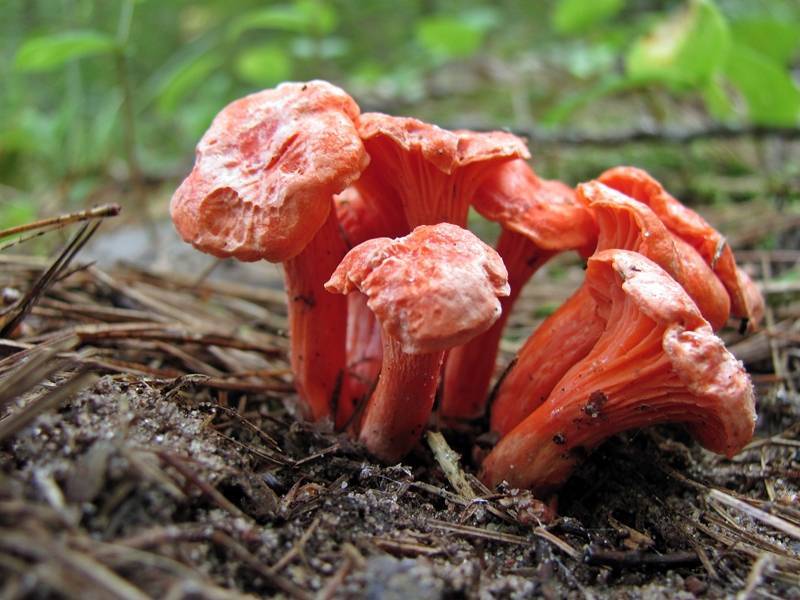|
Cantharellus Platyphyllus
''Cantharellus platyphyllus'' is a species of fungus in the family Cantharellaceae found in Tanzania. First described in 1966 as a species of ''Cantharellus'', it was transferred to the new genus ''Afrocantharellus ''Afrocantharellus'' is a genus of fungi in the family Cantharellaceae. It was originally named as a subgenus of ''Cantharellus'', but was elevated to the rank of genus by Donatha D. Tibuhwa in 2012 based on morphological and molecular ...'' in 2012. References External links * Cantharellaceae Fungi described in 1966 Fungi of Africa {{Agaricomycetes-stub ... [...More Info...] [...Related Items...] OR: [Wikipedia] [Google] [Baidu] |
Fungus
A fungus ( : fungi or funguses) is any member of the group of eukaryotic organisms that includes microorganisms such as yeasts and molds, as well as the more familiar mushrooms. These organisms are classified as a kingdom, separately from the other eukaryotic kingdoms, which by one traditional classification include Plantae, Animalia, Protozoa, and Chromista. A characteristic that places fungi in a different kingdom from plants, bacteria, and some protists is chitin in their cell walls. Fungi, like animals, are heterotrophs; they acquire their food by absorbing dissolved molecules, typically by secreting digestive enzymes into their environment. Fungi do not photosynthesize. Growth is their means of mobility, except for spores (a few of which are flagellated), which may travel through the air or water. Fungi are the principal decomposers in ecological systems. These and other differences place fungi in a single group of related organisms, named the ''Eumycota'' (''true f ... [...More Info...] [...Related Items...] OR: [Wikipedia] [Google] [Baidu] |
Cantharellaceae
The Cantharellaceae are a family of fungi in the order Cantharellales. The family contains the chanterelles and related species, a group of fungi that superficially resemble agarics (gilled mushrooms) but have smooth, wrinkled, or gill-like hymenophores (spore-bearing undersurfaces). Species in the family are ectomycorrhizal, forming a mutually beneficial relationship with the roots of trees and other plants. Many of the Cantharellaceae, including the chanterelle (''Cantharellus cibarius''), the Pacific golden chanterelle (''Cantharellus formosus''), the horn of plenty (''Craterellus cornucopioides''), and the trumpet chanterelle (''Craterellus tubaeformis''), are not only edible, but are collected and marketed internationally on a commercial scale. Taxonomy History The family was originally described in 1888 by German mycologist Joseph Schröter to accommodate the chanterelles, which at that time were thought to be an evolutionary link between "primitive" ''Thelephora'' species ... [...More Info...] [...Related Items...] OR: [Wikipedia] [Google] [Baidu] |
Species Description
A species description is a formal description of a newly discovered species, usually in the form of a scientific paper. Its purpose is to give a clear description of a new species of organism and explain how it differs from species that have been described previously or are related. In order for species to be validly described, they need to follow guidelines established over time. Zoological naming requires adherence to the ICZN code, plants, the ICN, viruses ICTV, and so on. The species description often contains photographs or other illustrations of type material along with a note on where they are deposited. The publication in which the species is described gives the new species a formal scientific name. Some 1.9 million species have been identified and described, out of some 8.7 million that may actually exist. Millions more have become extinct throughout the existence of life on Earth. Naming process A name of a new species becomes valid (available in zo ... [...More Info...] [...Related Items...] OR: [Wikipedia] [Google] [Baidu] |
Cantharellus
''Cantharellus'' is a genus of popular edible mushrooms, commonly known as chanterelles, a name which can also refer to the type species, ''Cantharellus cibarius''. They are mycorrhizal fungi, meaning they form symbiotic associations with plants, making them very difficult to cultivate. Caution must be used when identifying chanterelles for consumption due to lookalikes, such as the jack-o'-lantern mushroom (''Omphalotus olearius'' and others), which can make a person very ill. Despite this, chanterelles are one of the most recognized and harvested groups of edible mushrooms. Many species of chanterelles contain antioxidant carotenoids, such as beta-carotene in ''C. cibarius'' and ''C. minor'', and canthaxanthin in ''C. cinnabarinus'' and ''C. friesii''. They also contain significant amounts of vitamin D. The name comes from Greek κάνθαρος, ''kantharos'' 'tankard, cup'. [...More Info...] [...Related Items...] OR: [Wikipedia] [Google] [Baidu] |
Afrocantharellus
''Afrocantharellus'' is a genus of fungi in the family Cantharellaceae. It was originally named as a subgenus of ''Cantharellus'', but was elevated to the rank of genus by Donatha D. Tibuhwa in 2012 based on morphological and molecular A molecule is a group of two or more atoms held together by attractive forces known as chemical bonds; depending on context, the term may or may not include ions which satisfy this criterion. In quantum physics, organic chemistry, and bioche ... evidence. ''Afrocantharellus'' species are only known from Africa. References External links * Cantharellaceae Agaricomycetes genera {{Agaricomycetes-stub ... [...More Info...] [...Related Items...] OR: [Wikipedia] [Google] [Baidu] |
Fungi Described In 1966
A fungus ( : fungi or funguses) is any member of the group of eukaryotic organisms that includes microorganisms such as yeasts and molds, as well as the more familiar mushrooms. These organisms are classified as a kingdom, separately from the other eukaryotic kingdoms, which by one traditional classification include Plantae, Animalia, Protozoa, and Chromista. A characteristic that places fungi in a different kingdom from plants, bacteria, and some protists is chitin in their cell walls. Fungi, like animals, are heterotrophs; they acquire their food by absorbing dissolved molecules, typically by secreting digestive enzymes into their environment. Fungi do not photosynthesize. Growth is their means of mobility, except for spores (a few of which are flagellated), which may travel through the air or water. Fungi are the principal decomposers in ecological systems. These and other differences place fungi in a single group of related organisms, named the ''Eumycota'' (''true fungi' ... [...More Info...] [...Related Items...] OR: [Wikipedia] [Google] [Baidu] |



